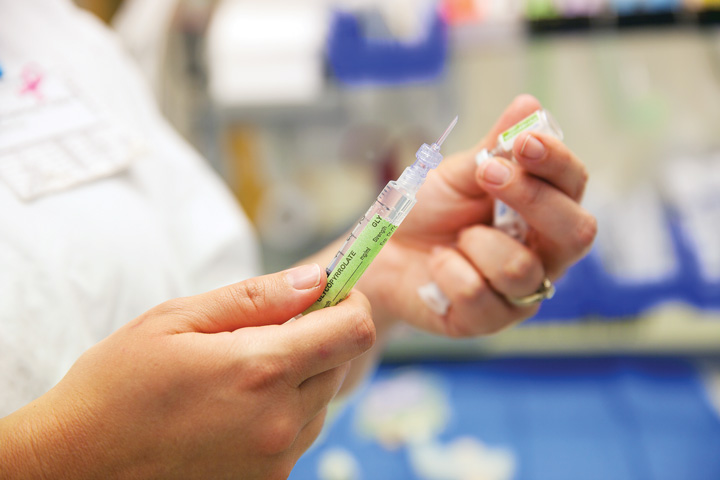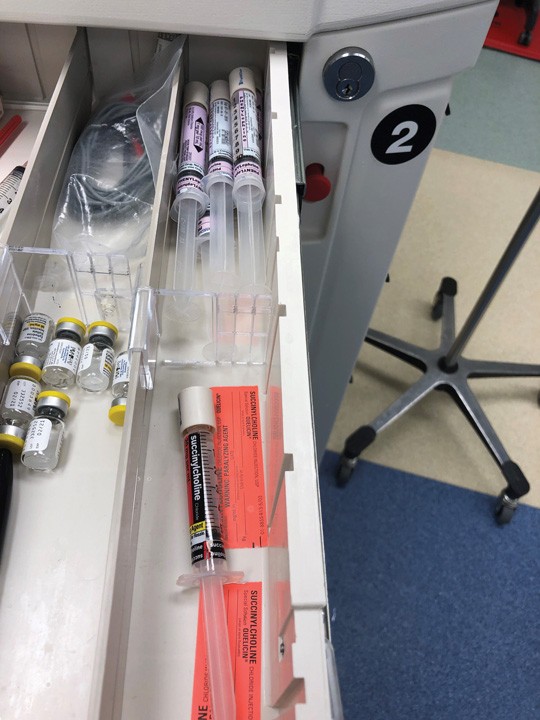- Home
- Special Editions
- Article
A Better Way to Evaluate Prefilled Syringes
By: Linda Childers | Contributing Editor
Published: 9/18/2023
Demand for this drug delivery method is on the rise, and more facilities are taking a closer look at this option.
Over the past decade, prefilled syringes have become a popular method of drug delivery in outpatient surgery centers. Thanks to increased safety, convenience and accuracy, many centers have made the switch from vials to prefilled syringes.
A recent report , published in July by Fortune Business Insights, shows the global prefilled syringe market is expected to continue experiencing unprecedented growth over the next seven years. It notes that while the global prefilled syringe market was worth $7.91 billion in 2023, the market for preloaded medications is expected to grow to $16.32 billion by 2030.
In addition to being used in outpatient surgery, prefilled syringes are also being utilized more frequently in the inpatient setting, according to a January 2022 study published in the Journal of Infusion Nursing.
Adding to the increased popularity of prefilled syringes is a continued emphasis by the healthcare industry to reduce medication errors and improve patient safety. Included among the 2023 National Patient Safety Goals, a group of objectives for the improvement of health care created annually by The Joint Commission, is making the handling and use of medications safer, with an increased focus on safe labeling and ready-to-use drug systems.
“Prefilled syringes have evolved significantly since they were first introduced,” says David Shokrian, MD, a plastic surgeon and owner of Millennial Plastic Surgery in New York City. “Improvements in manufacturing technologies, such as more reliable sealing techniques and better barrier materials, have enhanced the safety and shelf life of prefilled syringes,”says Dr. Shokrian. “They’re also now available in various sizes and designs to accommodate different drug volumes and administration routes.”
Despite advances in the field, prefilled syringes do have some limitations. While most experts agree that the benefits of using preloaded medications outweigh any potential disadvantages and can help to ensure compliance in your facility, it’s important to consider the following factors if your outpatient surgery center is contemplating making a switch.
Not all medications are available

“The limited availability of prefilled syringes for certain medications can prevent their broader usage,” says Dr. Shokrian. “Some drugs may not be suitable for prefilled syringes due to stability issues, interactions with the syringe material or the complexity of the formulation.
If a drug is not produced in a prefilled syringe by a traditional manufacturer, the U.S. Food and Drug Administration (FDA) says another option is to obtain syringes from an FDA-registered outsourcing facility (also known as a compounding facility).
Using these facilities, however, can unlock new concerns. “While they do offer a broader selection of prefilled syringes, compounding facilities don’t always have the same manufacturing standards,” says Susan Paparella, MSN, RN, vice president of the Institute for Safe Medication Practices (ISMP), a nonprofit organization dedicated to medication safety education located in Plymouth Meeting, Pa.
Ms. Paparella adds that some prefilled syringes prepared by compounding facilities have product labels that describe the dose per mL as the primary dose expression, instead of the total dose per total volume in the syringe as required by manufacturers.
“This creates a serious chance of an overdose if the label is misunderstood,” she says. “The ISMP has asked compounders repeatedly to address this concern and align their labeling practices with United States Pharmacopeia and FDA regulations.”
To further address safety, Ms. Paparella notes the American Society of Health-System Pharmacists offers a vendor assessment tool (osmag.net/compounder) with suggested questions that outpatient surgery centers can use when ordering from compounding facilities.
Considering safety aspects
Switching from vials to prefilled syringes has been shown to improve patient safety, while also reducing contamination errors, says Dr. Shokrian. Since pre-filled syringes come pre-labeled, it removes concerns about labeling compliance.
“Prefilled syringes reduce the need for manual preparation, lowering the risk of medication errors and contamination,” says Dr. Shokrian. “Since prefilled syringes are filled and sealed under controlled conditions, they are less prone to contamination during preparation.
Moreover, the ready-to-use nature of prefilled syringes reduces the likelihood of medication errors associated with manual preparation.”
In addition, Ms. Paparella says scannable barcode labels on prefilled syringes promote safety, while also saving time. “The barcoded label contains information about the name of the product and the strength of the medication,” she says. “It saves the user time in applying a label and if it’s the wrong dosage or medication, scanning the barcode can alert the user of the discrepancy.”
Eliminating dosing errors is another advantage of using manufacturer-supplied prefilled syringes. Since these ready-to-administer syringes feature premeasured dosing in prefilled formats, it’s less likely for medical errors to occur.
More expensive, but often well worth it

Some outpatient surgery centers may hesitate to transition to prefilled syringes, but Dr. Shokrian says the benefits outweigh the added costs.
“Prefilled syringes are designed to contain precise doses, ensuring accurate medication administration,” he says. “In addition, they’re ready to use, saving time and effort in preparation, especially in an emergency situation.”
Dr. Shokrian notes that using prefilled syringes saves money in the long run. Since these syringes are available in common dosage amounts, anesthesia providers save time by not needing to draw medications from a vial.
They also eliminate the need to prepare medications between cases and, as a result, can focus more on patient care rather than logistics.
“Compared to vials, prefilled syringes are more precise, reducing the need for overfill and wasted medication,” Dr. Shokrian says.
In addition, since each syringe is packaged individually and sealed, the risk of infection from cross-contamination or environmental exposure is minimized. According to Ms. Paparella, a 2022 study comparing the cost-effectiveness of ready-to-administer and traditional vial-and-syringe methods for opioids found prefilled syringes were cost-effective and demonstrated savings by reducing error rates.
“The study went on to say that adding ready-to-administer syringes could help facilities to improve care, build efficiency, increase patient safety and save money,” she says.
Another study found the cost of wasting morphine, fentanyl and hydromorphone using vials was approximately $2.40 a dose, which can add up to thousands of dollars in waste each year.
When purchasing prefilled syringes from a compounding facility, check their beyond-use dates (BUD) since they can vary from one facility to the next. Selecting products with the longest BUD can also result in cost savings and prevent waste.
Examining storage issues
Since prefilled syringes are larger than vials, some centers find storing the larger products can be an issue. “I know several drug manufacturers who work with outpatient surgery centers on storage solutions,” Ms. Paparella says. “They demonstrate how medication dispensing cabinets can be utilized more effectively to maximize space and how to modify the existing configuration of trays.”
Ms. Paparella says optimizing cabinet space is imperative to ensure medication availability and increase medication safety. In fact, one study found that optimizing a medication dispensing cabinet involves the following three critical steps:
- Removal of medications that haven’t been dispensed for at least 180 days.
- Movement of stock to better suit end-user needs and increase available space.
- Adjustment of par-levels (desired on-hand inventory levels).
Reducing overfill and waste
According to Dr. Shokrian, prefilled syringes eliminate overfill of often expensive medications, therefore reducing waste.
“The downside to prefilled syringes is the environmental impact of increased plastic waste from single-use syringes,” he says. “While this remains a concern, efforts to improve recycling or explore eco-friendly materials are ongoing.”
Examine the advantages
For outpatient surgery centers who still use vials, Dr. Shokrian recommends examining whether the medications your center administers the most are available as prefilled syringes.
He also recommends examining just how much medication is currently wasted at your facility.
“The advantages of improved safety, accurate dosing and convenience can be particularly beneficial in outpatient settings where efficiency and patient safety are critical,” he says. OSM
.svg?sfvrsn=be606e78_3)
.svg?sfvrsn=56b2f850_5)